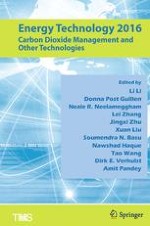2016 | Buch
Energy Technology 2016
Carbon Dioxide Management and Other Technologies
herausgegeben von: Li Li, Donna Post Guillen, Neale R. Neelameggham, Lei Zhang, Jingxi Zhu, Xuan Liu, Soumendra N. Basu, Nawshad Haque, Tao Wang, Dirk E. Verhulst, Amit Pandey
Verlag: Springer International Publishing
